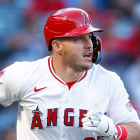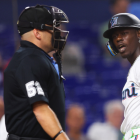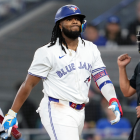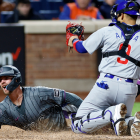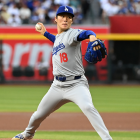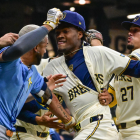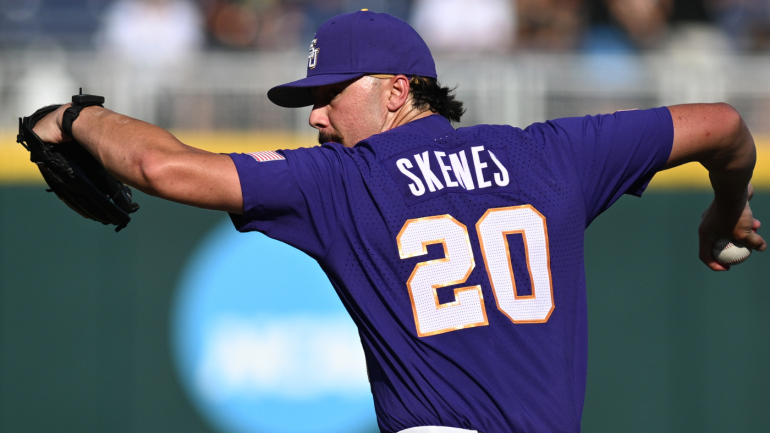
Come Sunday, July 9, the Pittsburgh Pirates will make the first selection in Major League Baseball amateur draft for the sixth time in franchise history. It's unclear at present who the Pirates intend to select. LSU outfielder Dylan Crews is widely considered to be the top prospect in the class, but the Pirates could embrace the same portfolio approach that they used in 2021, when they took Henry Davis and used the savings to land several other notable talents.
That uncertainty has inspired debate about who the Pirates should choose. For as tempting as Crews is -- and he's a well-regarded hitter with a good track record against top-flight collegiate competition -- he's not the only intriguing player on the LSU roster. Consider Paul Skenes, the top pitcher in the class who struck out 48% of the batters he faced in conference play. Might the Pirates decide they'd like to add his elite arm strength to the organization?
Only the Pirates know for sure. We here at CBS Sports wanted to cover the possibility by highlighting the recent history of pitchers going No. 1 overall -- why it doesn't seem to happen very often anymore, the successes, and the failures. Scroll slowly with us, won't you?
1. Infrequent, risky occurrence
It isn't your imagination: pitchers have seldom come off the board first over the last decade. Casey Mize was the most recent example, and that was back in 2018. Prior to Mize, you have to go back to Brady Aiken in 2014, or, if you want someone who signed, Mark Appel in 2013. That stretch -- one pitcher selected first in the last eight drafts -- is tied with the early 2000s for the second-longest such drought in history. A pitcher was less likely to be made the No. 1 pick only when the summer draft was first instituted -- and that was a different time in many respects.
Ascribing patterns to one or two data points is often a fool's errand, but let's face it: teams absolutely know that pitchers are riskier than hitters and take that into account; after all, it's been a talking point in sabermetric circles since the 1990s. Furthermore, empirical data suggests that hitters selected No. 1 overall are indeed more productive than their pitcher counterparts. To wit, No. 1 pick pitchers who signed produced an average Wins Above Replacement total of 15.8 and a median of 12.8; hitters checked in at 23.5 average and 16.9 median.
You can certainly concoct scenarios where taking a pitcher first might be the more sensible approach -- e.g., if the pitcher is a clear generational talent; if it's a weak year for hitters; or if one likes going against the day and probabilistic analysis -- but it's undeniable that the Pirates selecting Skenes would qualify as a greater historical anomaly than taking Crews.
2. Cole, Strasburg, Price highlight successes
Oddly enough, we're not that far removed from the Golden Age of No. 1 Pitchers.
In 2007, the then-Devil Rays took lefty David Price from Vanderbilt. Two years later, the Nationals selected Stephen Strasburg, a seeming generational talent from San Diego State. Then, two years after that, the Pirates popped Gerrit Cole, a flamethrower from UCLA. All three became aces at the big-league level (even if it took Cole until he was traded to the Astros to pitch as one consistently), and they have since combined for a Cy Young Award, 13 All-Star Game appearances, three ERA titles, and a World Series Most Valuable Player Award.
| Pitcher | Career G | WAR |
|---|---|---|
David Price | 400 | 40.3 |
Stephen Strasburg | 247 | 32.3 |
Gerrit Cole | 284 | 36.9 |
What's more is that those three are the most successful No. 1 pitchers in draft history, as judged by Baseball Reference's version of WAR. They all cleared the 30-WAR threshold, putting them in the top-15 for No. 1 picks overall. For perspective, consider that only one other pitcher selected No. 1 overall had eclipsed 30 WAR in their career. That was former workhorse righty Andy Benes, who was chosen first by the Padres way back in 1988. Teams used the top spot on five pitchers between Benes and Price's selection: just one of them cleared so much as 20 WAR.
With that in mind, let's transition from the highs to the lows.
3. Appel among recent whiffs
As noted in the first subheading, there've been few instances of a pitcher going No. 1 over the last decade. The few given the honor, it's fair to write, have not lived up to the billing.
Mize has made just over a full season's worth of starts since debuting in 2020, and he hasn't yet pitched this year following a pair of surgeries. Aiken and Appel fared even worse. Aiken didn't sign with the Astros, and, upon being redrafted a year later, suffered through injuries and poor performance before being cut. Appel, for his part, made all of one big-league appearance, with that coming after he was traded, retired, and returned. He was released earlier this year and he has not yet resurfaced in organized baseball.
Go back in time, before the Price-Strasburg-Cole trio, and the outcomes weren't much better. Let's go beat-by-beat through the first most recent No. 1 pitchers:
- Luke Hochevar, RHP, Royals (2006): Hochevar entered his age-29 season with a career 5.39 ERA. He then had several good years as a reliever, but he was basically finished by his 32nd birthday. Considering some of the high-end talent picked right after him (in order: Evan Longoria, Clayton Kershaw, Tim Lincecum, and Max Scherzer, among others), it's hard to say this selection worked out as desired.
- Bryan Bullington, RHP, Pirates (2002): You might recall that this was the "Moneyball" draft. The Pirates chose Bullinger instead of B.J. Upton, Zack Greinke, and Prince Fielder -- and those were just top-10 selections. Bullinger made 26 big-league appearances over five seasons, only six of which came with Pittsburgh.
- Matt Anderson, RHP, Tigers (1997): Yes, the Tigers took a reliever No. 1 overall. No, he never started a big-league game. Yes, he finished his career with an ERA+ of 89. No, the Tigers probably never regretted passing on J.D. Drew (who didn't sign), Troy Glaus, or Vernon Wells, three of the other top five selections that summer. Yes, that last sentence is sarcasm.
- Kris Benson, RHP, Pirates (1996): The Pirates have a thing for taking right-handed pitchers first overall. Benson was better with Pittsburgh than you probably recall, amassing a 105 ERA+ in 126 starts. He was then traded to the Mets in a deal that returned José Bautista, among others. Alas, Bautista didn't become Bautista with the Pirates.
- Paul Wilson, RHP, Mets (1994): The mid-90s were a wild time when it came to the draft. New York chose Wilson over Ben Grieve and Dustin Hermanson, with the real stars of the first round not coming off the board until the teens (Nomar Garciaparra, Paul Konerko, and Jason Varitek). Wilson made 170 big-league appearances across seven seasons. He finished with an ERA+ over 100 just once.
Those five pitchers combined for 17.7 Wins Above Replacement; for reference, the average No. 1 pick who reached the majors has tallied 21.4 Wins Above Replacement. Woof, we say. Woof.
Between the attrition risk and the performances of most recent pitchers selected No. 1, you can understand why the Pirates might decide to pass on Skenes, regardless of who they take instead.














